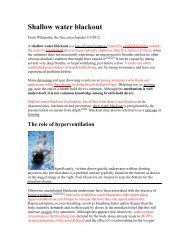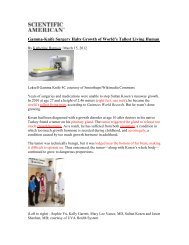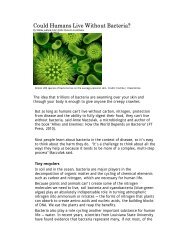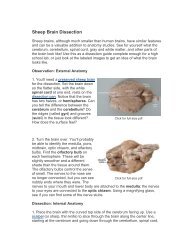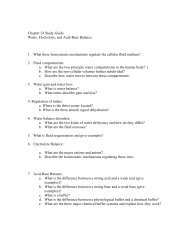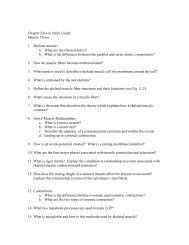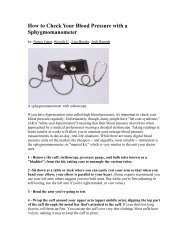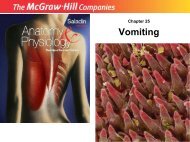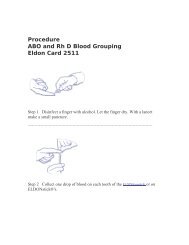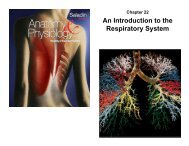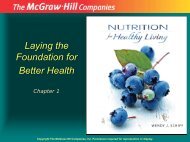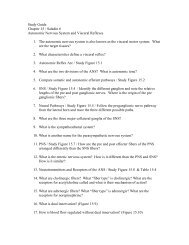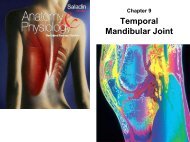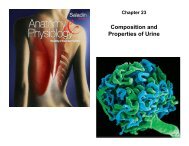Bio 1400 Study Guide Chapter 4 Body Basics 1. What forms the ...
Bio 1400 Study Guide Chapter 4 Body Basics 1. What forms the ...
Bio 1400 Study Guide Chapter 4 Body Basics 1. What forms the ...
- No tags were found...
Create successful ePaper yourself
Turn your PDF publications into a flip-book with our unique Google optimized e-Paper software.
20. <strong>What</strong> is <strong>the</strong> chemical environment inside <strong>the</strong> stomach and what prevents <strong>the</strong> stomach<br />
from digesting itself?<br />
2<strong>1.</strong> Are nutrients absorbed in <strong>the</strong> stomach?<br />
22. <strong>What</strong> two structures function as <strong>the</strong> “gate keepers” for <strong>the</strong> stomach? <strong>What</strong> is<br />
heartburn?<br />
23. <strong>What</strong> is <strong>the</strong> relative length of <strong>the</strong> three sections of <strong>the</strong> small intestines?<br />
24. <strong>What</strong> happens in <strong>the</strong> small intestines? How long does it take for <strong>the</strong> chyme to move<br />
through <strong>the</strong> intestines?<br />
25. <strong>What</strong> role does <strong>the</strong> liver play in <strong>the</strong> digestive system?<br />
26. <strong>What</strong> is <strong>the</strong> relationship between <strong>the</strong> liver and gall bladder?<br />
27. <strong>What</strong> is <strong>the</strong> function of <strong>the</strong> pancreas in <strong>the</strong> digestive system?<br />
28. <strong>What</strong> is <strong>the</strong> regulatory mechanism between <strong>the</strong> duodenum, liver, gall bladder, and<br />
pancreas?<br />
29. <strong>What</strong> is <strong>the</strong> function of “absorptive cells of <strong>the</strong> small intestine? <strong>What</strong> is unique about<br />
an infant’s absorptive cells?<br />
30. <strong>What</strong> is <strong>the</strong> relationship between <strong>the</strong> portal vein, chylomicrons, and lacteals?<br />
3<strong>1.</strong> Explain <strong>the</strong> condition and physiologic mechanism associated with <strong>the</strong> following<br />
conditions: cystic fibrosis, inflammatory bowel disease, constipation, diarrhea, vomiting,<br />
heartburn, and peptic ulcer.<br />
32. How long is <strong>the</strong> colon? <strong>What</strong> happens in <strong>the</strong> colon?<br />
33. <strong>What</strong> is <strong>the</strong> terminal section of <strong>the</strong> large intestines called and what is stored here?<br />
34. Are <strong>the</strong>re bacteria in <strong>the</strong> GI tract? Explain



